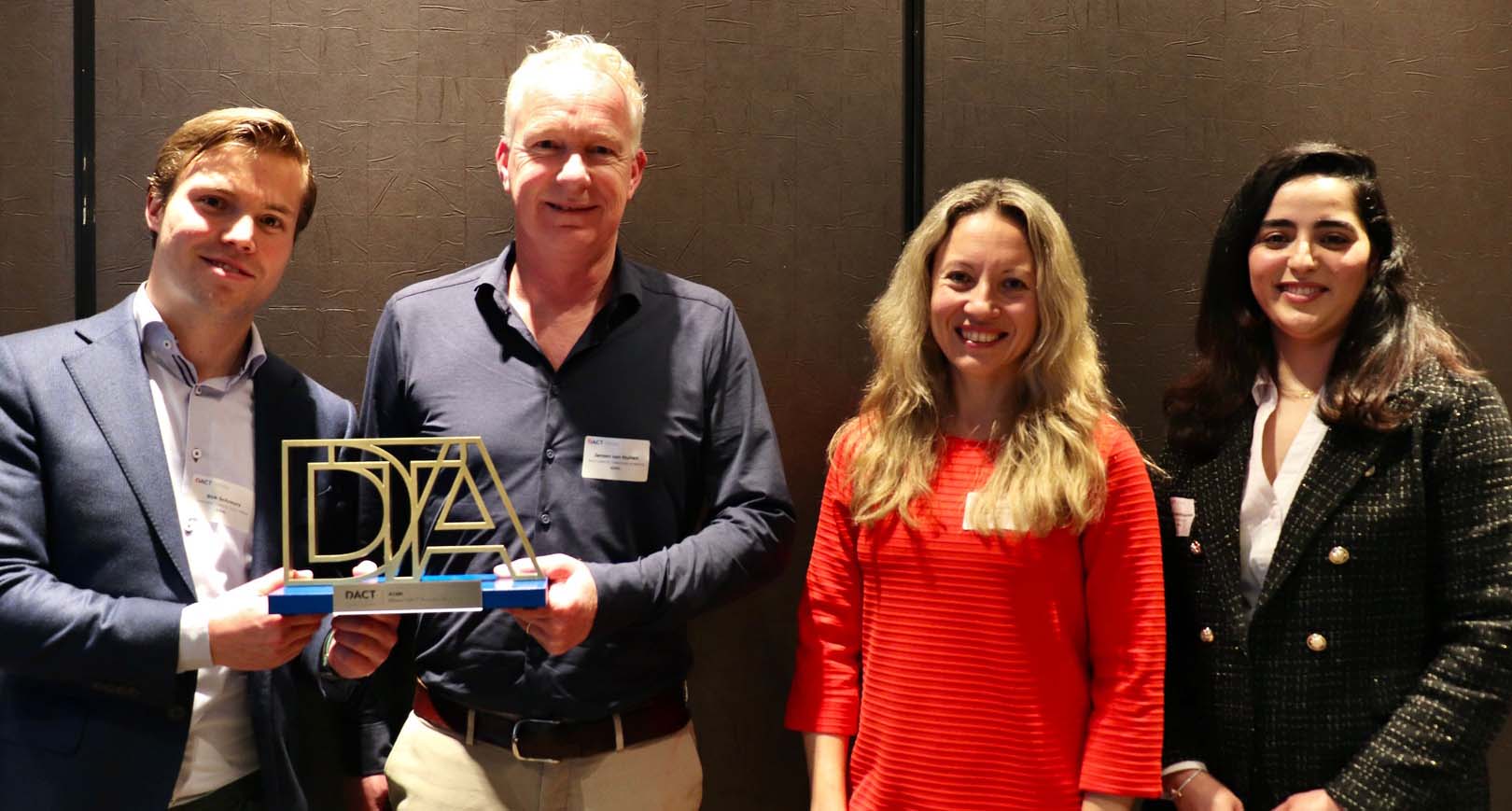Identifying company-specific use cases for AI solutions, rather than trying to “reinvent ChatGPT”, is the cornerstone of a successful project that could save time and lower FX risks. Here, Rick Schreurs, Team Lead, Treasury Front Office, ASML, offers insight into the company’s award-winning FX exposure forecasting tool.
The rapid adoption of AI across finance is changing the game for organisations, not least for treasurers who are eagerly eyeing its potential for revolutionising activities such as cash and exposure forecasting, risk management, and fraud detection.
While it is still early days for this particular revolution, many organisations have started engaging with AI internally and through third parties such as their banks. As they do so, one of the most challenging topics for them will be how they formalise their processes for developing and implementing the technology more broadly in a coherent, controlled fashion across the organisation.
A successful AI-driven project undertaken by the treasury at ASML, one of the world’s leading suppliers of photolithography machines used to produce computer chips, illustrates the impact in-house expertise can have in implementing the technology. The project, the winner of the Dutch Association of Corporate Treasurers’ (DACT’s) 2023 Treasury Award, sought to improve the company’s FX exposure forecasting with the help of AI.
Targeting the issues
Explaining the nature of the company’s concerns over FX, Schreurs firstly points out that the firm is primarily a design and assembly company. The parts for the chip-making machines it manufacturers are sourced from a number of suppliers, with some paid for in USD. ASML then sells its machines in EUR worldwide, leaving the company exposed to the EUR/USD exchange rate.
“The big problem for us was that our hedging forecasts were proving to be only 70% accurate. That’s a significant deviation from where we want to be. The mismatch between the forecast and actual results generates headaches, of course, such as being under- or over-hedged, ineffective hedge accounting, and impacting margin.”
The pre-AI hedging solution used by ASML was itself the result of careful consideration versus several other options. It had been in operation for several years, with certain modifications made over the period, to help improve its accuracy. The significant volatility of the past few years, however, intensified the treasury team’s search for better options.
As part of that effort, the treasury team sat down with ASML’s sourcing department to try to figure out how to make FX forecasting more accurate. First, a couple of alternatives, including grounding the forecasting at the individual vendor level were tried. That helped a little, but the deviations versus actuals were still larger than where they needed to be. At that stage, before AI considerations, what ASML was doing was typical of what many companies might do, just diving into the analysis to see what improvements could be made instead of perhaps thinking about more radical solutions.
The rapid, high-profile emergence of AI inspired the treasury and data science teams to look at just such a radical route to solving their FX exposure forecasting challenge. In particular, Jeroen van Hulten, Finance AI Team Lead, ASML, Zeinab Bakhtiarinoodeh, Senior Data Scientist, ASML and Axel Bijker, Expert Advisory, Treasury Korea, ASML, saw the potential for leveraging emerging new AI algorithms and models being made freely available through the open-source ecosystem of software and the developer resources rapidly evolving around the technology.
In-house innovation
One of the most impressive aspects of the AI solution developed by ASML is that it has been created entirely in-house. Treasury started by talking to ASML’s data science team, which is conveniently housed within finance, about how AI might help. The solution eventually devised is very much the result of that close collaboration and dialogue with other departments.
During the design and development phase, one of the first activities the project team focused on was collecting five years of ASML’s historic, actual data for FX outcomes. Three years of that actual data was then applied to 20 free open-source algorithms so that each could learn and search for patterns such as trends and seasonality.
The data was fed to each of those 20 models, creating the predictions for the remaining two years. That way, the accuracy of each model could be compared with the actual results for that period. By doing that, it could be seen which of the models generated forecasts that were better than the 70% ASML was getting and wanted to improve on. “We could then definitely say those models that were better had potential for further fine-tuning, for shaping, and bending them towards our specific use case.”
That iterative process resulted in the project team eventually being able to home in on one solution as the one best suited to ASML’s objectives. This specific one leverages free open-source algorithms based on Python, a widely used programming language for AI and ML. The language’s simplicity, versatility, and extensive libraries and frameworks, along with a well-supported ecosystem and strong community input, has made it a popular choice for building AI applications.
The headline results to date from ASML’s final implemented AI solution for FX hedging are impressive and it is delivering a host of spin-off benefits. FX exposure forecasting accuracy has soared from 70% to 96% leading to more effective hedging by the company, which in turn has helped it minimise the impact of EUR/USD movement on gross margin. More broadly, compared with the pre-AI method for creating forecasts, the new solution saves on labour and time and is less prone to manual error.
Previously, this was a manual Excel-based exercise and it took quite some time to build the forecast. Now this is generated automatically and it is much more accurate. People who used to spend hours building the forecast can now spend that time on more value-adding activities, notes Schreurs.
“We now have much more efficient input for hedging and significantly greater forecasting accuracy. The AI solution is learning every month, ensuring its adaptability to business movements, and is scalable vertically and horizontally. We are also gaining new data insights that could help us fine-tune the solution even more.”

DIY AI
Schreurs readily concedes that with ASML being a high-tech company – it spends billions annually on R&D – it possesses considerable technical talent on which it can call for developing an AI solution in-house. He is tech savvy and, indeed, his deep and long-held interest in technology and know-how is one of the main reasons he joined ASML five years ago. Understandably, treasurers might well conclude that their organisations also need to have considerable technical expertise to emulate ASML’s DIY AI approach. However, that is not necessarily the case.
He elaborates: “Yes, ASML does have the capability to take on such a project and be comfortable doing so, and I appreciate most companies will not have that expertise. The aspect that I am especially keen to highlight for fellow treasurers, however, is that our particular project shows that you don’t have to build an AI solution from scratch or need to be deep experts. There are lots of resources out there on the internet that everyone can access. Of course, the shaping and bending of algorithms, and fine-tuning them, is a skill and you do need to develop it or access it if not readily at hand. But the starting point for such projects is often relatively easy.”
ASML advises those treasurers looking to explore DIY AI, but who have little previous experience, to begin with use cases that are not overly complex. That will help to accumulate the knowledge needed to tackle more complex problems.
ASML’s solution took a year from concept and design phases through to build and implementation, with the latter phase taking longest, says Schreurs. “Notwithstanding our technical expertise, it is an AI project of a kind we had never done before, so there is a learning curve for us too. It’s also a new way for us to consider using AI as a basis for determining exposures, based on which we execute hedging. It is important to get it right and gain confidence in its accuracy. That takes time and much of that relates to the implementation phase. The actual building of the solution took just a couple of months at most.”
Another important aspect for treasurers to bear in mind before embarking on such AI projects is to have a clear idea of the level of improvement being sought. Benchmarking of the incumbent process that is being targeted for AI is therefore essential.
Also vital is the carrying out of a robust proof of concept. With ASML’s project, this entailed testing across multiple open-source algorithms to reveal the most promising solutions. While this was successful with the FX project, a positive outcome is not always a given.
“In our case, the answer we received from the proof of concept was yes, there are one or two algorithms that look promising and we can perhaps fine-tune them to generate a better solution. It’s an iterative process from which the final and best solution emerges. But you have to be realistic and have in mind that AI is not going to be the solution for every problem you have as a treasurer. You need to make sure that the time you are going to spend on such a project is justified and a solid proof of concept is key to helping with that. That is a very important step to take.”
Sail those smaller ships
While Schreurs assures treasurers they do not need to be accomplished AI experts to undertake an AI project, he does believe they will need, or have access to, someone who has a data science background and understands AI-generated models. Moreover, treasurers will need to explain to the data scientist the underlying treasury data to be fed to potential AI models.
“A typical data scientist is unlikely to understand how the business operates in the same way as a treasurer, and the patterns that might already be in there. The treasurer has to collaborate closely with the data scientists. They will have to explain that underlying data to them so they have all the information and understanding needed to try to ensure a successful outcome.”
Having said that, ASML treasury would encourage peers to be bold in exploring AI applications and not to be afraid to start somewhere. “Don’t make it overly complex initially. Just do some research, and see what simple things you can accomplish. Our model is actually relatively simple yet it has generated huge business value to us. You don’t need to reinvent ChatGPT on your own, right? You can sail much smaller ships.”
The success of the project has given ASML the confidence and trust to explore AI even further to find other potential use cases. The AI FX exposure forecasting solution is being monitored for accuracy on a monthly basis and there are no plans to tweak it further while it continues to perform at its current “excellent” levels. Indeed, so pleased is the company with the results that it believes the project process as a whole provides a potential blueprint for other AI treasury applications. Balance sheet exposure forecasting and analysis is one that the team are especially keen to investigate for similar treatment.
Schreurs says: “It is still early days for AI applications, but already we are seeing it is generating tangible and highly desirable outcomes. The direction of travel is clear, and the pace at which the technology is moving is pretty amazing, even for those of us who are technically minded.
“We are all on a learning and development curve with AI. As the open-source ecosystem for it becomes more populated and sophisticated, engineering AI solutions for real-world problems within companies will only become easier. Opportunities for treasurers and the finance function generally are going to be enormous, not just in terms of the solutions it generates but the impact that it will have in shaping, perhaps even redefining, the future role and responsibilities of treasurers.”



